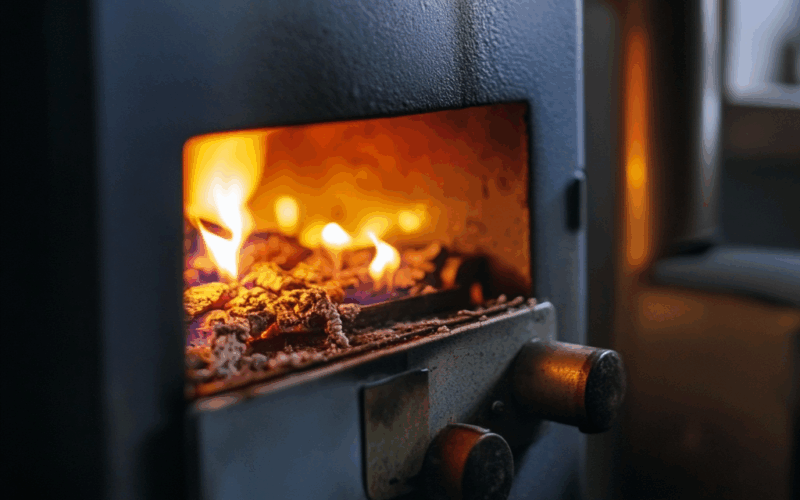Overlooking Compatibility with Existing Heating Systems
One of the most frequently overlooked aspects when buying an oil burner is ensuring its compatibility with the existing heating setup in the home. Many homeowners assume that all oil burners are universally adaptable, but the reality is far more complex. Systems vary significantly in terms of design, age, and technical specifications. An oil burner that doesn’t match the requirements of your heating system can cause serious performance issues, require costly alterations, or even fail to work altogether.
To avoid these problems, a detailed inspection of your current system should be done before purchasing a new unit. Key elements such as boiler design, fuel delivery system, venting method, and electrical connections must be reviewed. Consulting a licensed HVAC technician can help identify compatibility risks and ensure the new burner integrates seamlessly. This small step in the buying process can prevent significant frustrations, additional costs, and safety concerns down the line.
Neglecting Energy Efficiency Ratings
Energy efficiency is a crucial yet often neglected factor when selecting an oil burner. While the initial cost of a burner may seem like the most important financial consideration, the long-term energy usage is where most of the expenses will occur. Burners that lack high-efficiency ratings can consume significantly more oil than necessary, inflating fuel bills and increasing the home’s carbon footprint. Many buyers are surprised when what seemed like a budget-friendly choice turns into an ongoing financial burden.
It’s essential to look for oil burners that are certified for high energy efficiency, such as those with the Energy Star label or superior AFUE (Annual Fuel Utilization Efficiency) ratings. These labels indicate that the equipment converts a higher percentage of fuel into usable heat, minimizing waste. Though high-efficiency models may have a higher purchase price, they usually result in considerable savings over time and often qualify for energy rebates or tax credits. Factoring in these long-term benefits makes the efficient choice the economically smarter one.
Choosing the Wrong Size or Capacity
Selecting an oil burner with incorrect size or capacity is a mistake that can compromise the entire heating system’s performance. An oversized burner will tend to cycle on and off more frequently, a process known as “short cycling,” which can lead to inefficient operation, increased wear and tear, and reduced equipment lifespan. Conversely, an undersized burner may constantly run without ever adequately heating the space, leading to cold spots, discomfort, and overuse of the system.
To find the correct size, a comprehensive heating load analysis should be performed. This assessment should consider the total square footage of the home, insulation quality, number of windows, ceiling heights, and regional climate conditions. Relying solely on guesswork or previous equipment sizing can result in significant inefficiencies. By taking the time to evaluate your home’s specific heating needs, you can ensure optimal comfort, energy savings, and equipment durability.
Ignoring Maintenance and Service Requirements
Another common mistake is underestimating the importance of regular maintenance for oil burners. While some buyers assume they are buying a plug-and-play appliance, oil burners require routine servicing to remain efficient, safe, and reliable. Without proper maintenance, soot buildup, nozzle clogs, or ignition issues can develop, leading to inefficient combustion, increased emissions, and even system failure. Over time, neglecting maintenance will inevitably result in more frequent breakdowns and higher repair costs.
When purchasing a burner, buyers should investigate the model’s serviceability. Units designed with easy access to key components such as filters, ignition systems, and heat exchangers tend to be easier and less expensive to maintain. It’s also wise to consider the availability of replacement parts and local service professionals familiar with the model. Choosing a well-supported and low-maintenance unit will simplify ownership, reduce downtime, and extend the lifespan of your heating system.
Focusing Only on Price Over Quality
Letting price dictate the entire purchasing decision is a mistake many first-time buyers make. The appeal of a low price tag can overshadow essential considerations such as build quality, performance, safety features, and manufacturer support. While a cheaper unit might seem like a smart financial move, it often comes at the expense of long-term reliability. Lower-end oil burners are more prone to malfunctions, may lack necessary certifications, and can be more difficult to service.
Instead, buyers should evaluate overall value rather than focusing solely on upfront cost. This means considering factors like warranty coverage, brand reputation, material durability, and product reviews from other homeowners. High-quality oil burners tend to last longer, run more efficiently, and require fewer repairs, ultimately delivering a better return on investment. Paying slightly more for a trusted brand or proven model is often a more economical and less stressful decision in the long run.
Failing to Consider Long-Term Operating Costs
When buying an oil burner, many people focus solely on the sticker price and forget to account for long-term operating costs. This is a critical oversight, as the true cost of ownership goes far beyond the initial purchase. An oil burner that is inexpensive upfront but inefficient or prone to breakdowns can end up costing much more over the years.
Here are five important long-term cost factors to consider:
- Fuel efficiency – More efficient burners consume less oil, leading to lower monthly heating bills.
- Maintenance – Some models require more frequent servicing or specialized technicians, increasing upkeep costs.
- Repair costs – Low-end burners may suffer from more frequent breakdowns, leading to higher repair bills.
- Parts availability – Burners that use rare or proprietary parts can make replacements slower and more expensive.
- Lifespan – Units that are built with quality materials and engineering last longer, providing better overall value.
Evaluating these ongoing expenses will help you make a more informed choice and avoid unpleasant surprises after installation. Prioritizing long-term value over short-term savings is the key to a wise investment.
Question and Answer
Answer 1: You should assess your current heating system and consult a professional to ensure the burner matches your setup.
Answer 2: Because efficient models use less fuel, saving money and reducing environmental impact over time.
Answer 3: It may lead to poor performance, higher energy use, and system wear due to improper cycling or insufficient heating.
Answer 4: Regular maintenance ensures safe, efficient operation and lowers the risk of breakdowns and repair costs.
Answer 5: You might get a low-quality unit that lacks durability and ends up being more expensive over time.

